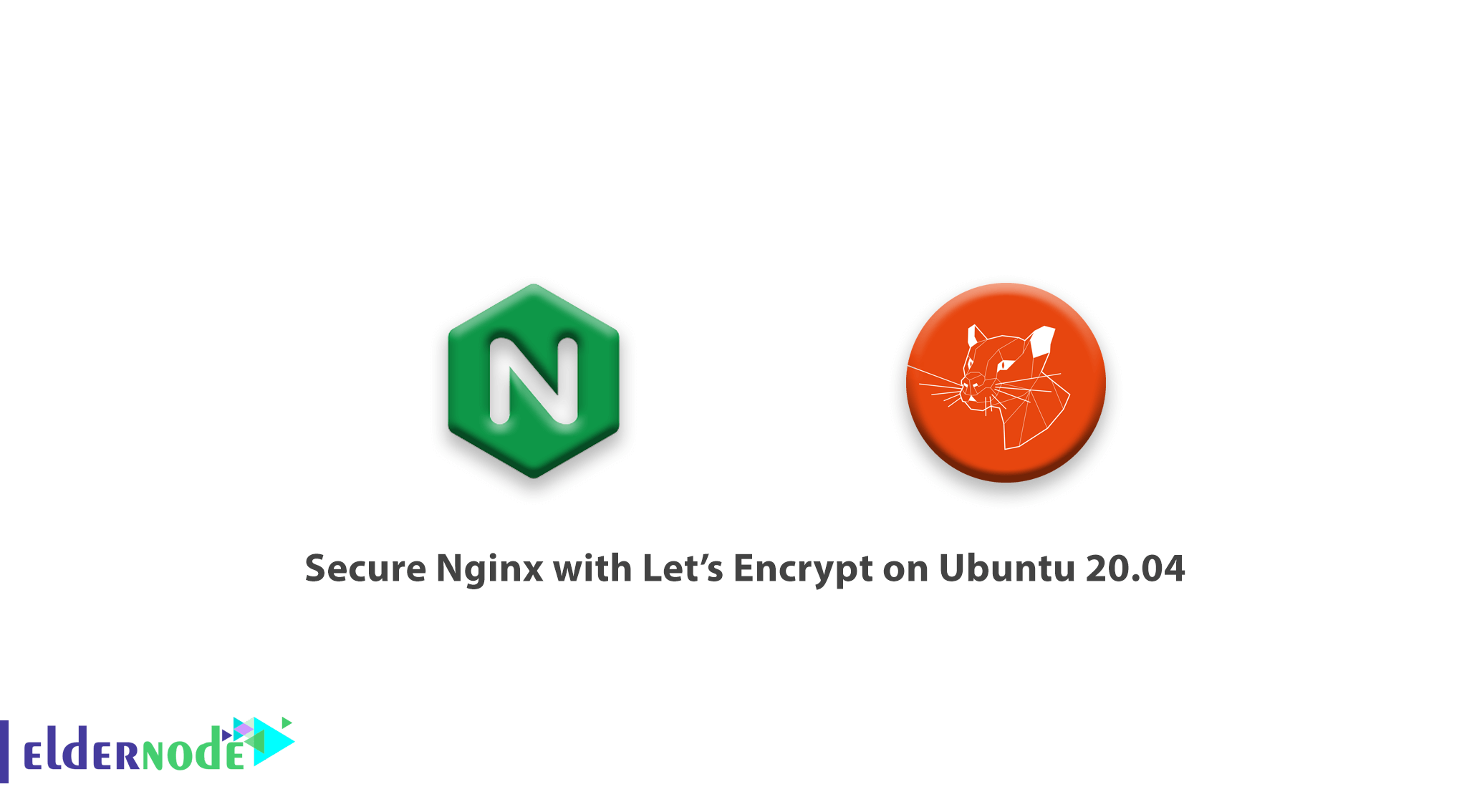
Due to previous tutorials in Nginx, in this article, you will learn how to secure Nginx with Let’s Encrypt on Ubuntu 20.04. It is a Certificate Authority (CA) that provides an easy way to obtain and install free TLS/SSL certificates.
It simplifies the process by providing a software client, Certbot, that attempts to automate most of the required steps. Currently, the entire process of obtaining and installing a certificate is fully automated on both Apache and Nginx.
Prerequisites
The tutorial may be more useful if you know:
- a non-root user with sudo privileges
- To set up, follow our Initial server setup on Ubuntu 20.04
Table of Contents
How to secure Nginx with Let’s Encrypt on Ubuntu 20.04
To finish this tutorial, we use Certbot to obtain a free SSL certificate for Nginx on Ubuntu 20.04 and set up your certificate to renew automatically. And also, use a separate Nginx server configuration file instead of the default file. You recommend creating a new Nginx server block files for each domain because it helps to avoid common mistakes and maintains the default files as a fallback configuration. Let’s walk through the steps of this guide to reach the purpose of this article.
1- Installing Certbot
First, you must install the Certbot software on your server.
sudo apt install certbot python3-certbot-nginx
2- Confirming Nginx’s configuration
To configure SSL automatically, Certbot needs to be able to find the correct server block in your Nginx configuration. The way it does this is to look for a server_name directive that matches the domain you request a certificate for.
Open the configuration file for your domain using nano or your favorite text editor:
sudo nano /etc/nginx/sites-available/example.com When you find the existing server_name line, you will view it below.
... server_name example.com www.example.com; ...Then, exit your editor, and move on to the next step when it is done successfully. But, if it doesn’t, update it to match. Then save the file, quit your editor, and verify the syntax of your configuration edits:
sudo nginx -tIn case you faced an error, reopen the server block file and check for any typos or missing characters. Once your configuration file’s syntax is correct, reload Nginx to load the new configuration:
sudo systemctl reload nginxYou let the Certbot find the correct server block and update it automatically.
3- Allowing HTTPS through the firewall
As we recommended you to enable the ufw firewall, when you do this, you will need to adjust the settings to allow for HTTPS traffic. Luckily, Nginx registers a few profiles with ufw upon installation.
Check the current setting:
sudo ufw status Status: active To Action From -- ------ ---- OpenSSH ALLOW Anywhere Nginx HTTP ALLOW Anywhere OpenSSH (v6) ALLOW Anywhere (v6) Nginx HTTP (v6) ALLOW Anywhere (v6)
Next, you can allow the Nginx Full profile and delete the redundant Nginx HTTP profile allowance, to additionally let in HTTPS traffic.
sudo ufw allow 'Nginx Full' sudo ufw delete allow 'Nginx HTTP'Your status should appear as below.
sudo ufw status Status: active To Action From -- ------ ---- OpenSSH ALLOW Anywhere Nginx Full ALLOW Anywhere OpenSSH (v6) ALLOW Anywhere (v6) Nginx Full (v6) ALLOW Anywhere (v6)Then, run Certbot and fetch our certificates.
4- Obtaining an SSL Certificate
Certbot would bring you several ways to obtain SSL certificates through plugins. The Nginx plugin will take care of reconfiguring Nginx and reloading the config whenever necessary.
You can use this plugin by using the following command:
sudo certbot --nginx -d example.com -d www.example.com You will be prompted to enter an email address and agree to the terms of service, if this is your first time running certbot. Then, certbot will communicate with the b Encrypt server, then run a challenge to verify that you control the domain you’re requesting a certificate for.
Finally, certbot will ask how you’d like to configure your HTTPS settings if that’s successful.
Please choose whether or not to redirect HTTP traffic to HTTPS, removing HTTP access. - - - - - - - - - - - - - - - - - - - - - - - - - - - - - - - - - - - - - - - - 1: No redirect - Make no further changes to the webserver configuration. 2: Redirect - Make all requests redirect to secure HTTPS access. Choose this for new sites, or if you're confident your site works on HTTPS. You can undo this change by editing your web server's configuration. - - - - - - - - - - - - - - - - - - - - - - - - - - - - - - - - - - - - - - - - Select the appropriate number [1-2] then [enter] (press 'c' to cancel):
By hinting ENTER after selecting your choice, the configuration will be updated, and Nginx will reload to pick up the new settings. certbot will wrap up with a message telling you the process was successful and where your certificates are stored:
IMPORTANT NOTES: - Congratulations! Your certificate and chain have been saved at: /etc/letsencrypt/live/example.com/fullchain.pem Your key file has been saved at: /etc/letsencrypt/live/example.com/privkey.pem Your cert will expire on 2020-08-18. To obtain a new or tweaked version of this certificate in the future, simply run certbot again with the "certonly" option. To non-interactively renew *all* of your certificates, run "certbot renew" - If you like Certbot, please consider supporting our work by: Donating to ISRG / Let's Encrypt: https://letsencrypt.org/donate Donating to EFF: https://eff.org/donate-le
As the certificates are downloaded, installed, and loaded, now reloading your website using https:// and notice your browser’s security indicator.
Generally, it should indicate that the site is properly secured, usually with a lock icon.
5- Verifying Certbot Auto-Renewal
The Encrypt’s certificates are only valid for 90 days, which forces users to automate their certificate renewal process. The certbot package takes care of this for you by adding a systemd timer that will run twice a day and automatically renew any certificate that’s within thirty days of expiration.
To query the status of the timer with systemctl:
sudo systemctl status certbot.timer● certbot.timer - Run certbot twice daily Loaded: loaded (/lib/systemd/system/certbot.timer; enabled; vendor preset: enabled) Active: active (waiting) since Mon 2020-05-04 20:04:36 UTC; 2 weeks 1 days ago Trigger: Thu 2020-05-21 05:22:32 UTC; 9h left Triggers: ● certbot.service
Also, you can test the renewal process, by running the command below.
sudo certbot renew --dry-run Good job! You reached to the purpose of this guide and learned how to Secure Nginx with Let’s Encrypt on Ubuntu 20.04.
If you see no errors till here, it means you’re all set. Please be aware that Certbot will renew your certificates and reload Nginx to pick up the changes when necessary. If the automated renewal process ever fails, Encrypt will send a message to the email you specified, warning you when your certificate is about to expire.
Dear user, we wish this tutorial would be helpful for you, to ask any question or review the conversation of our users about this article, please visit Ask page. Also to improve your knowledge, there are so many useful tutorials ready for Eldernode training.




